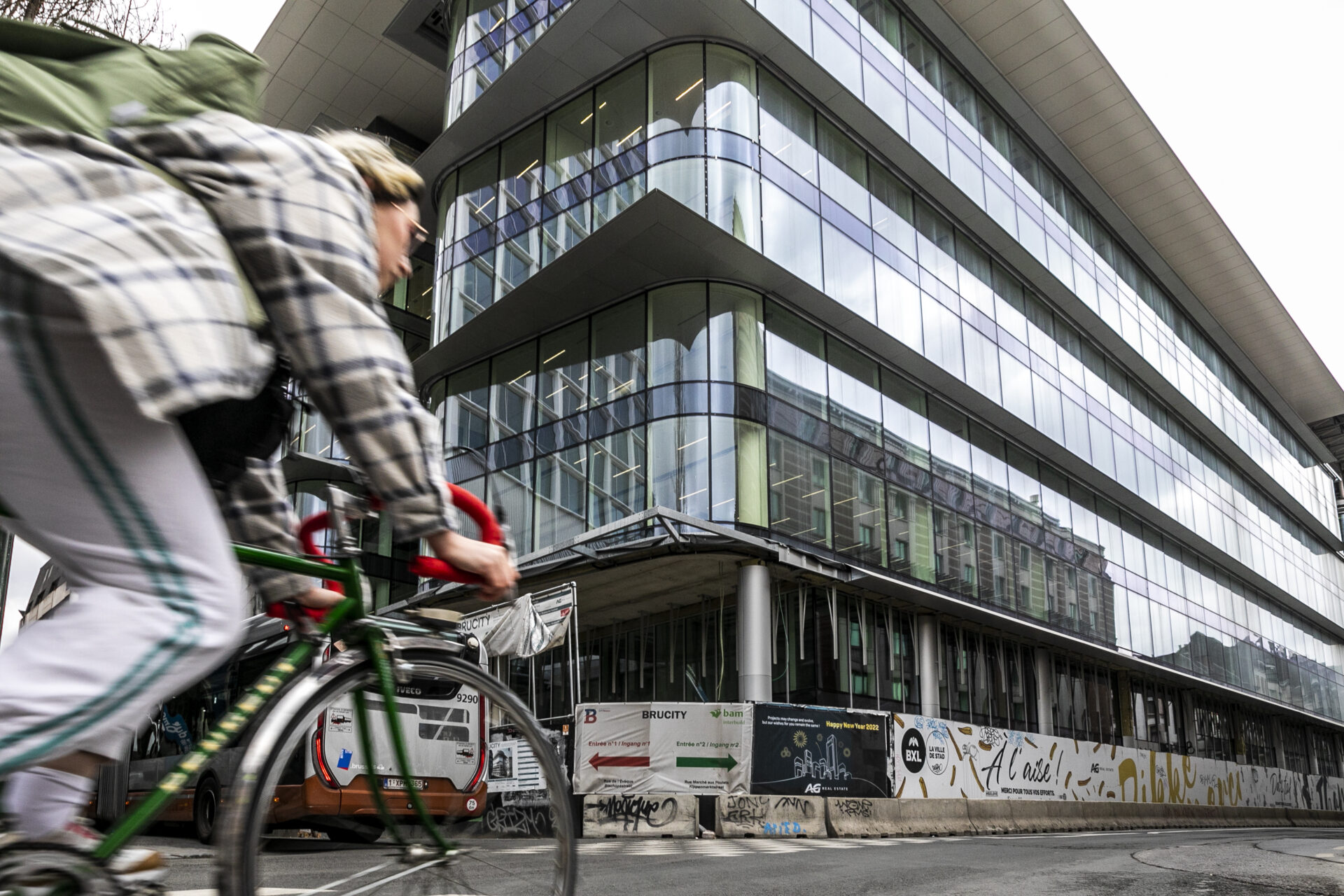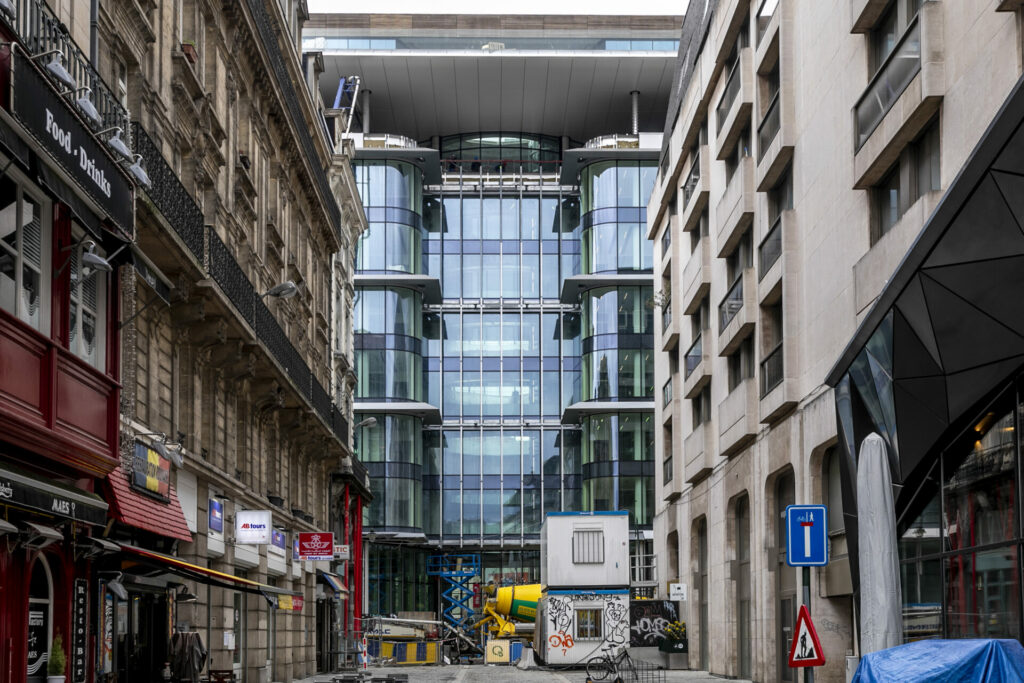At the start of this week, the City of Brussels municipality opened its new Administrative Centre near the Bourse, a building that has been hailed as more modern and sustainable by its proponents but has also been criticised as a perfect example of "what not to do" by urban activists.
The new centre, named Brucity, opened on Monday and is now located on Rue des Halles 4. It replaces the previous administrative centre on Place de Brouckère, which was described by one City of Brussels official as a "power-hungry" concrete box. The city's administration tried to renovate this building but later ditched these efforts, finding it was impossible to do so in a cost-effective way.
In search of a new location, that tied in with the City's aim to reduce its environmental impact, it constructed a new building on the former Car Park 58, between Place de la Bourse and Place de Brouckère. The City of Brussels claimed this move would allow it to better serve its citizens "with simplified services, a better and more efficient reception."
High hopes
The construction is modern and lined by floor-to-ceiling windows, but remains a bulk of a building that is squeezed between other buildings on the street. Aside from housing around 1,700 City of Brussels employees, it will also make various study and meeting rooms available to associations, students and other groups.
In line with the planning regulations set out in the region's new Good Living policy, it is equipped with solar panels, LED lighting, rainwater collection and a roof-top vegetable garden.

The area around the new building is being redeveloped to "promote active travel" but the creation of parking spaces casts doubt over this. Credit: Hatim Kaghat
However, while the City noted in their presentation of Brucity that it is eliminating parking spaces to "promote active travel," Parking 58 will still be replaced by an underground car park with 450 spaces for cars, and just 250 bicycle parking spaces.
An additional 140 bicycle racks will be placed outside of the building in the surrounding area, which as previously announced is also undergoing an overhaul with the aim of better "connecting the different neighbourhoods, creating a homogeneous whole" and greening the area with 43 new standard trees and plant 23 green spaces including "carefully chosen plants for all seasons."
Adopting flaws
While the opening of Brucity and the redevelopment of the surrounding area has been hailed as a major improvement by the City, Urban Research and Action Workshop (Arau) has argued that the building, which it has slammed as a "1950s cruise ship, stranded in the city centre," is a perfect example of what not to do.
"The volume of this building is even more imposing, visually crushing the streets and buildings that border it." An "intermediate" version of the project planned to recreate a type of alleyway or close, crossing the block in its middle. "But the City of Brussels decided otherwise," the organisation said.
According to Arau, the building has not only taken over the location of the car park 58, but it has also adopted some of its biggest flaws, especially regarding the provision of parking places in the middle of a pedestrian area."
Despite the new urban development policy stating new buildings should be designed in a way so they can fulfil multiple purposes within their lifespan, Arau argued the building does not allow for a mix of functions, even in the present day. "Whereas an earlier version of the plans included the provision of housing and shops, we are now presented with a building that is 100% office space."
Related News
- Climate-proofing Brussels calls for greater investment
- New Brussels administrative centre sees major rise in costs
Finally, the group raised questions regarding the reallocation of the 14 buildings that have been emptied to fill this large new space. "While some of them are the subject of 'advanced projects,' such as the Centre Monnaie and Hôtel Continental, others, such as the Town Hall, still have to find a new purpose."
Overall, it argued that the larger transformation of the "hypercentre", which is resulting in a "flowering" of real estate operations involving more than 200,000 m² of floor space, goes "far beyond the question of eliminating car traffic in favour of a 'calmer' public space."
The works around Brucity will start following the Consultation Committee on 23 February 2022, when plans will be presented and attendees can ask questions or raise an objection, and are expected to be completed by the end of 2024.

